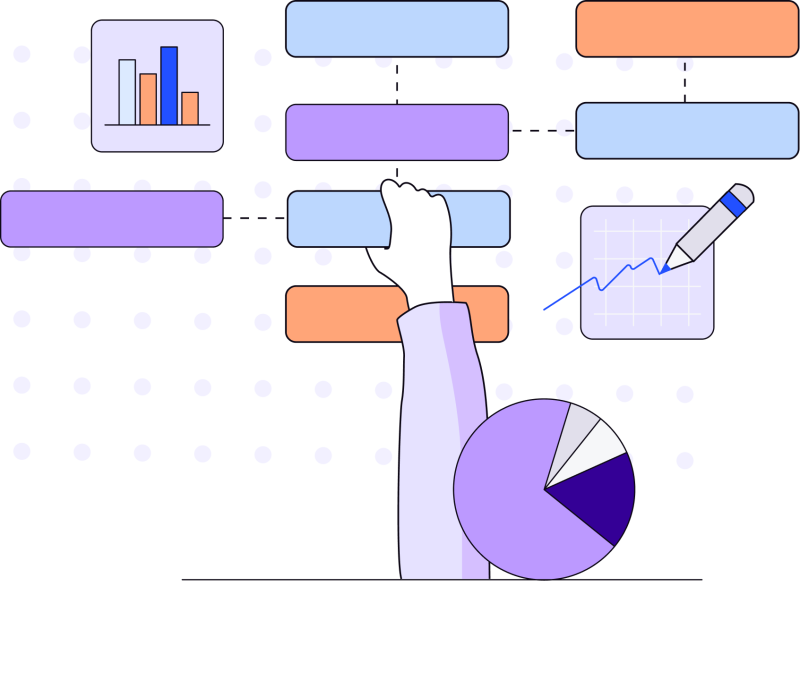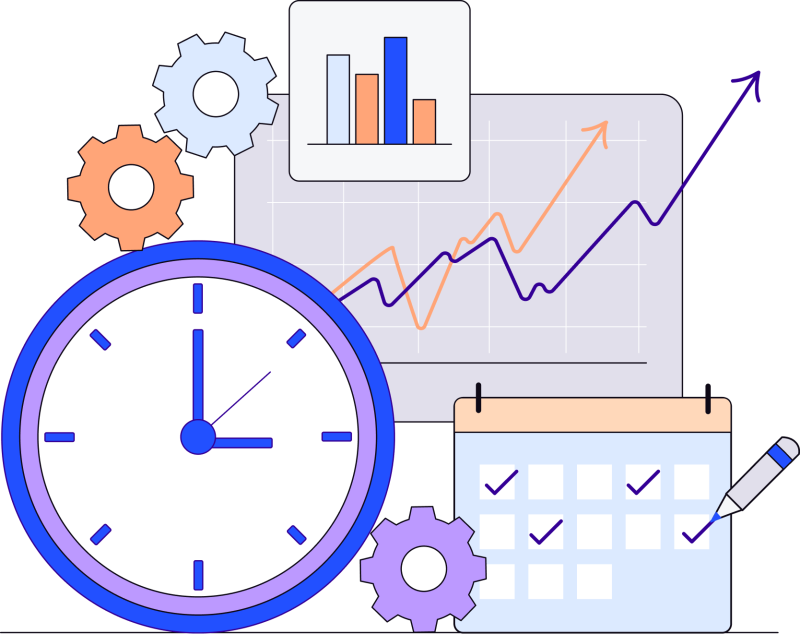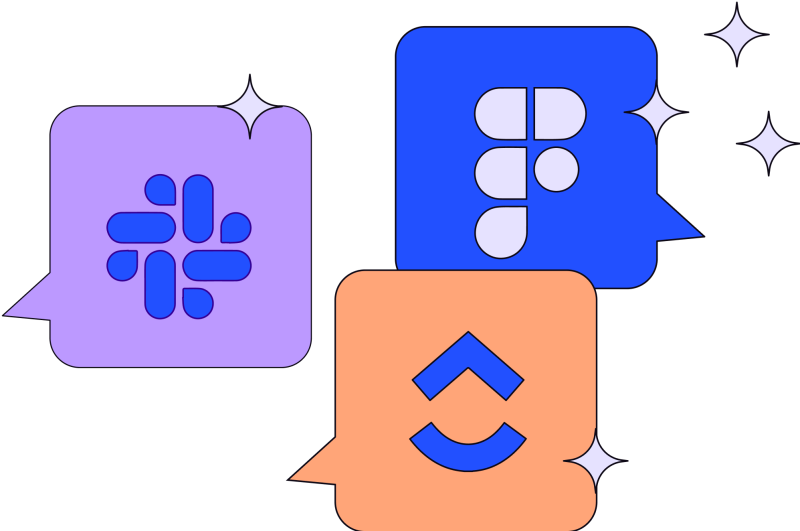You religiously recycle your Amazon boxes, seltzer cans, and peanut butter jars. You turn the water off while you brush your teeth. And you turn down the thermostat when you leave home. Bottom line: you don’t like to waste resources and you’re proud of it!
Do you apply the same diligence to your product’s design budget?
Many times, product design teams are throwing anything at the wall to see what sticks without adhering to a budget-driven plan. Hey, we’re not blaming you — building a product requires a lot of trial and error. But many times that means a lot of cash is being burned. (Make you wince in recognition? Been there.)
Whether you’re pre-seed or Series B, there are right ways and wrong ways to think about and plan for your product design budget. And the difference could mean moving on to the next stage or asking a lot of what-ifs.
It starts by establishing some practices that prevent cash-burning no matter what startup stage. Then, it takes focusing on the right goals at the time. Ultimately, you’ll maximize your design resources each step of the way to create that best-loved product you’ve been working so hard for.

Follow These Rules and Safeguard Your Design Budget at Any Startup Stage
Before you start allocating your resources, it helps to know there are things you can be doing right now to make every dollar count. Bootstrapped or investor-sponsored, no startup has an infinite runway.
We’ve tried and tested many things to figure out that, no matter what stage you’re at, following these rules can help you make the most of your budget.

Know who you’re designing for and the problem you’re tackling. If you don’t know your target audience or what you’re trying to solve for them through your product, you could be spending your time and money on a product that there is just no demand for. Be sure to ask the right questions before you launch into building anything new.

Continuously conduct user testing. If you’re not sure how your product resonates with your users, go straight to the source. User testing is the ultimate in letting you know exactly how your users are interacting with your product — or why they haven’t touched it in weeks. Then, user testing can help you fix what you need to fix and keep what you need to keep. We repeat: user test. every. step. of. the. way.

Hire the right people at the right times. You'll want to iterate on your designs multiple times before building anything, so hiring project managers and UX personnel before development teams could be smart. Don't have time or resources to hire? An agency like webuild might be a good fit!

Get a good project manager. Keeping everyone’s eyes on the prize is, well, priceless. And that’s where a good project manager comes in. They can make your product creation process go so much smoother. Especially if they’re seasoned and know your goals like the back of their hand.

Make (and follow) a product roadmap. Without a solid product roadmap, it’s hard to tell when you’ve gone off course, or where you aim to be at a given point. Creating a product roadmap helps your team get the full picture of where you’re heading and how you’re going to get there.

Use the best tools. Adopt streamlined, intuitive, and fun tools to make your job easier, more efficient, and fun. You’ll get more time for creating and iterating and spend less time on programs that are so 2018. We’re shameless fans of Figma, a game-changing product design tool.

Stay focused. Don't worry about the competition's newest shiny features. They might be a flash in the pan anyway. And it will only take you off course and prolong your product launch. Eyes on the prize!
Your No-Fail Budget Guide From Pre-Seed to Series A — and Beyond!
There’s no one-size-fits-all budget guide for all startups. For example, if you’re an early-stage startup with a lean team and limited resources, it doesn’t make sense to budget for cross-collaboration projects like it would for a more seasoned startup.
And, if you’re in a growth stage with multiple teams tackling several concurrent projects, it’s downright crazy not to invest in a design system.
Various team sizes, resource pools, and goals call for different budgeting strategies. Here’s how we break it all down to make the most of any budget.

Pre-seed/Seed: Focus on Data-Driven Design Creation
Wouldn’t it be great if you had all the time and money in the world to create the perfect product you’ve obsessed about? That may come someday, but not today.
To make the most of your resources in the early stages, focus on making the most out of what you’re creating so you get it right from the start.
Here’s the ideal pie chart breakdown of a pre-seed and seed startup design budget. You’ll notice as you move to a seed you’ll focus more on iterating and getting feedback. Your goal is to continually improve upon what you’re building.
Pre-seed
80% of budget = Design execution and creation
10% of budget = Getting feedback and user testing
10% of budget = Iteration
Seed
60% of budget = Design execution and creation
25% of budget = Iteration
15% of budget = Getting feedback and user testing
What to focus on at these stages:
Innovate
Don’t dive in too deep too fast. Spend quality time ideating and pulling insights from user testing. Get inspiration and references anywhere you can to ensure you’re making the best decisions. At this stage, gray boxing is your friend, so pull out that proverbial cocktail napkin and get drawing!
Share
Run your initial ideas by all stakeholders and get sign-off before moving forward. You’d hate to go forward with a project only to be met with discord and disapproval later.
Simplify
Ask users what their MVP is. What is the feature they must have to make them use the product? Focus on that first and foremost, then simplify. Everything else is bonus points.
Repurpose
Pull out your old designs and see what you can reuse or repurpose. Don't cringe! This is perfectly normal (and actually pretty smart). Are there previous products you've created that have elements that could work on your next? Looking at old projects with fresh eyes can help your product put a new spin on things — and help you save time and money.
Prototype
Prototyping for user testing is necessary. But the cost of designing, making those designs "usable," tweaking, and editing can turn into a vicious (and expensive) cycle. Spend time deciding what exactly to prototype, then make it perfect.
Series A and above: Focus on Iteration and Optimization
So you’re moving up in the world of digital products. Congrats, but don’t rest on your laurels just yet! The Series A round and up are all about iteration and optimization — and they need strategic budgets, too.
Here’s what you should aim for in your Series A (and up) budget:
Series A
50% of budget = Design creation and execution
25% of budget = Getting feedback and user testing
25% of budget = Iteration
Series B and up
25% of budget = Innovation (design execution & creation)
75% of budget = Optimization
Sharpen your product and your team’s efficiency by adopting these tips:
Invest
Now’s the time to invest in creating a design system — or pull in someone who knows how (like us!) If you’re a smaller operation, you’ll be able to scale design over time and have a massive impact. For bigger teams, it will keep you all on the same page and ensure consistency throughout the product.
Tests
Not sure which landing page design is gonna work with your users? A/B test it. Can’t decide on the copy in your email? A/B test it. It’s an affordable way to quickly know what's working and what's not.
Dig in
How is your product truly solving the problems your users need? Find out by running user tests. Dig into the insights and discover how to give your users more of what they want and improve upon what's already going well.
Analyze
You can’t know how well your product is performing unless you face the facts. Always be on top of your data, analyzing your basic metrics and keeping an eye out for bad news like churn.
As you scale your team, build features that wow, and convince more investors your product is IT, budgeting and strategizing should be part and parcel of the work you do. The best part is, you don’t have to strategize, iterate, or optimize alone. We’d be more than happy to help. Drop us a line!









